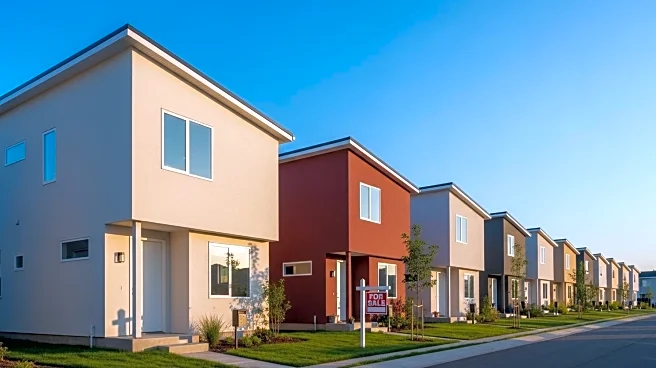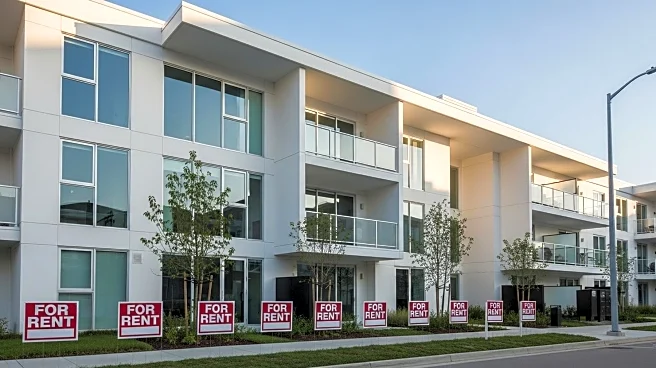What is the story about?
What's Happening?
The U.S. homeownership rate has stagnated at around 65% in Q2 2025, the lowest since 2019, despite a housing boom inflating home values by 45% since early 2020. This disconnect signals a structural shift in the housing market, influenced by demographic trends, economic pressures, and lifestyle preferences. The stagnation reflects affordability challenges, with mortgage rates near 7% and dwindling entry-level home supply. Younger generations are increasingly turning to renting, with renter households growing faster than homeowner households, particularly in urban areas.
Why It's Important?
The stagnation in homeownership rates is reshaping the real estate market, with rental properties, especially multi-family and urban properties, offering more compelling investment opportunities. The rental market is projected to grow, driven by urbanization, remote work, and demographic shifts. Investors are reallocating capital towards rental real estate, focusing on urban markets with strong job growth and limited supply, as well as suburban areas with high demand. This shift highlights the changing priorities of younger generations, who prioritize flexibility over ownership.
What's Next?
The rental market is expected to continue absorbing demand as homeownership remains inaccessible for many. Investors should focus on urban and suburban markets with strong job growth and regulatory stability. Multi-family properties, particularly those with larger units, are well-positioned to benefit from these trends, as families and remote workers seek larger spaces.
Beyond the Headlines
The stagnation of homeownership growth reflects broader economic and cultural shifts, including affordability challenges and changing lifestyle preferences. This development underscores the importance of adapting investment strategies to capitalize on opportunities in rental real estate, as the housing landscape evolves towards flexibility rather than ownership.
AI Generated Content
Do you find this article useful?














